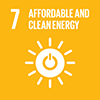Description/achievement of initiative
We are instituting a companywide commitment to achieve carbon neutrality by the end of fiscal year 2013. The commitment will apply to Microsoft's business operations in over 100 countries.
Implementation methodologies
As part of our commitment, we are establishing an internal carbon fee based on current market pricing for renewable energy and carbon offsets. Business groups within Microsoft will be financially responsible for the cost to offset their carbon emissions. The carbon price charge-back model, which will be administered through the corporate finance department, is expected to incent carbon reduction through efficiency measures and encourage the usage of renewable sources of energy. For emissions not eliminated through efficiency measures, Microsoft will purchase renewable energy and carbon offsets to achieve the carbon neutrality goal, as well as increasing our purchase of renewable energy.
For Microsoft, Carbon neutrality refers to achieving net zero carbon emissions by offsetting gross carbon emissions from our operations with an equivalent amount of renewable energy and carbon sequestered or offset. The carbon price will be applied to all business groups within Microsoft for the carbon associated with data centers, development labs, offices, and air travel. Business groups within Microsoft will be required to build the carbon price into their budgets. Microsoft has established a carbon price to integrate carbon reduction (measured in metric tons of CO2 equivalent) with business productivity (measured in USD). The internal carbon fee will place a price on carbon based on current market pricing for carbon credits, and make the company's business divisions responsible for the cost of offsetting the carbon emissions associated with their use of the company's data centers, software development labs, and office buildings, as well as business travel. For instance, with this model, the cost to the business for electricity use includes not only the price we pay the utility for electricity, but also the price we pay to offset the carbon emissions associated with our electricity use. For air travel, the cost includes not only the price we pay the airline for the airplane ticket, but also the price we pay to offset the carbon emissions associated with the flight. A summary of our carbon neutral strategy can be found in our whitepaper “Becoming Carbon Neutral: How Microsoft is Becoming Lean, Green, and Accountable”:
Becoming carbon neutral
Arrangements for Capacity-Building and Technology Transfer
Coordination mechanisms/governance structure
Partner(s)
Microsoft


 2013
2013
 2013
2013
 2013
2013